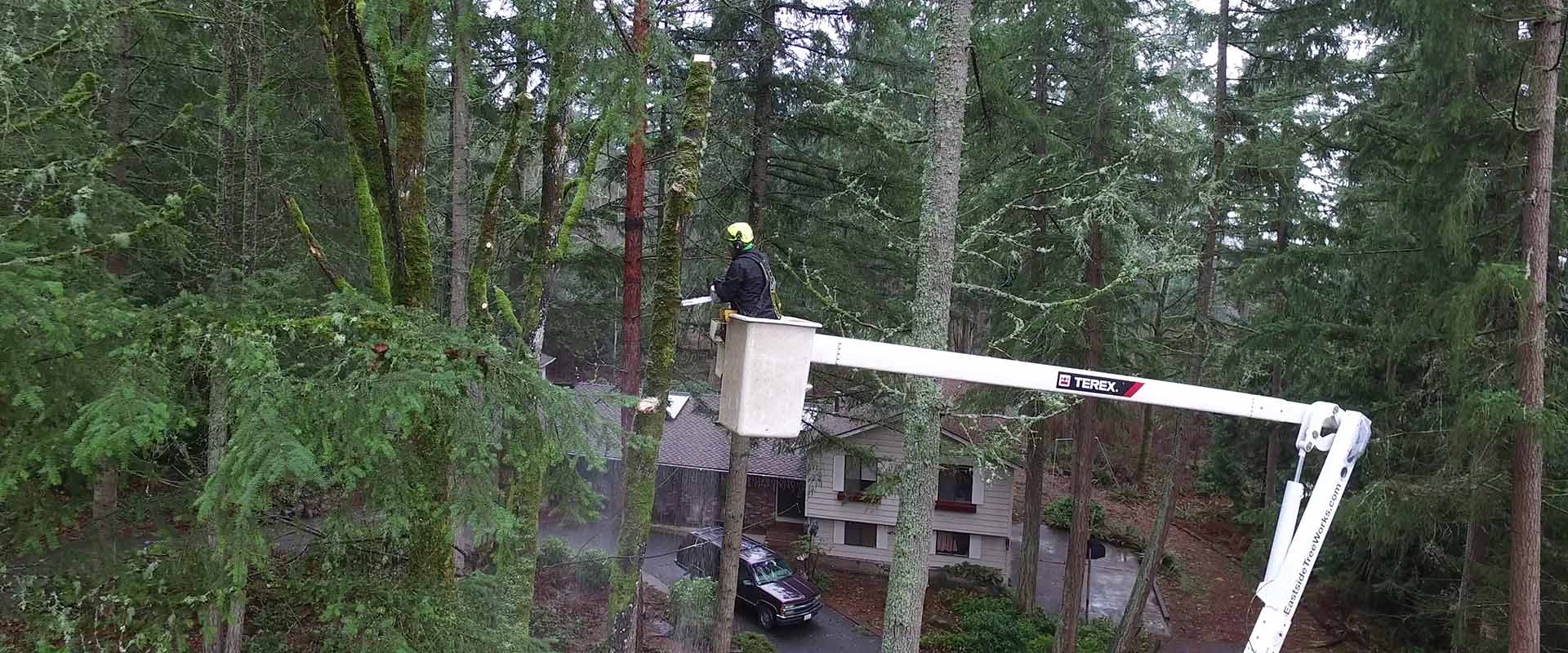When it comes to a home, trees are a valuable addition. They add beauty, shade, and character, enhancing a property’s appeal and worth.
However, there are times when removing a tree becomes necessary — whether for the safety of your home, the health of your landscape, or the tree’s well-being.
In the lush greenery of the Pacific Northwest, it’s important to approach tree removals with careful consideration.
This article will help you assess when tree removal is the right decision and what factors to consider before taking action.
Assessing Tree Health
Distinguishing between a healthy and an unhealthy tree is simple. A healthy tree has strong, vibrant foliage (for its species and season), solid bark, and a well-formed canopy. However, if you notice significant leaf loss, dead branches, or large sections of bark peeling off, these may be signs of decline.
Sometimes, the root cause of this degradation could be the roots themselves. A certified arborist can employ diagnostic tools such as sonic tomography and tree coring to assess internal decay, structural stability, and root health — something you can’t visibly detect.
If a tree is mostly dead or dying, residential tree removal services may be your best option.
Safety Concerns: Leaning and Storm Damage
Most Seattle tree removal servicesare commonly contacted forsafety concerns.
A leaning tree can pose a safety hazard, especially after it has been hit by a windstorm or heavy rains. If it is close enough to your home, it could fall onto your roof or through a window and cause injury to those who reside there.
You’ll have to get the condition inspected by an expert and they will let you know whether the tree needs to be removed. While not every storm-damaged tree requires removal, a careful evaluation can determine whether it’s safe to salvage or if removal is the better route.
Signs of Advanced Decay
Advanced decay in trees often signals serious internal damage and structural weakness. Here are the most common signs to look out for:
- The presence of mushrooms or conks on the trunk or around the base
- Large holes or hollow sections in the trunk
- Wood that feels soft, spongy, or easily breaks apart
- A high number of dead or brittle branches
- Bark that falls off easily or separates from the trunk
- A sudden or increasing lean may signal root decay
- The presence of carpenter ants, beetles, or termites
- Long vertical cracks in the trunk or limbs
- Poor leaf growth, early leaf drop, or discolored foliage
Interference with Structures or Other Plants
Sometimes, the problem may not be in the tree, but in its location. If a tree is too close to your home, garage, driveway, or power lines, it may be causing foundation damage, becoming a safety concern during high winds. Roots may interfere with plumbing or underground utilities and large canopies can overshadow smaller, healthy plants that need sunlight to thrive.
In some cases, we recommend strategic pruning or root barrier installation. However, if the tree’s size or location creates ongoing problems, a full removal may offer more long-term peace of mind.
Environmental and Aesthetic Considerations
Removing a tree isn’t always about damage or danger. In fact, residential tree removal services are often used to improve the overall balance of your landscape. You may want to clear space for new growth, restore sunlight to a shaded garden, or eliminate an invasive species.
Sometimes, trees can become aesthetically disruptive to your yard’s layout. They may have outgrown their space or been planted too close together. Responsible removal, followed by proper planting, can enhance your property’s appearance and ecological health.
How To Remove a Dead Tree
If you suspect a tree on your property is dead or needs to be removed, here’s how the process usually works:
- Schedule a Professional Evaluation
At Eastside Tree Works, our ISA-certified arborists begin with an on-site assessment. We’ll evaluate the tree’s health, stability, and location to determine the best course of action. - Permit Check and Compliance
In Seattle and surrounding areas, tree removals often require permits — especially for larger or street trees. As an SDOT and SDCI-compliant service provider, we handle these requirements for you, ensuring everything is done by the book. - Safe and Efficient Removal
Using specialized equipment and industry best practices, our trained crews remove the tree in sections, minimizing risk to your home and yard. We also offer stump grinding to fully clear the space for future use. - Cleanup and Hauling
Once the tree is down, we clean up the debris and remove all logs and branches unless you’d prefer to keep the wood for your fireplace.
Let’s Help You Make the Right Decision!
Determining the right approach for tree care requires thoughtful consideration, and removal isn’t always necessary. In some cases, a little maintenance or cabling can restore a tree’s stability and health. At Eastside Tree Works, our process always begins with transparent, expert recommendations tailored specifically to your landscape and objectives.
If you’re uncertain whether tree removal is necessary, we encourage you to contact us for guidance. We are proud to be a reputable provider of residential tree removal services in Carnation, Seattle, the greater Eastside, and North Bend. Our ISA and TCIA accreditations underscore our commitment to safety, professionalism, and the enduring health of your trees.
Since 2005, Eastside Tree Works has supported homeowners, contractors, and municipalities in making well-informed tree care decisions. With over two decades of expertise in Seattle tree removal and maintenance, we fully appreciate the urgency, sensitivity, and care that these decisions entail.

